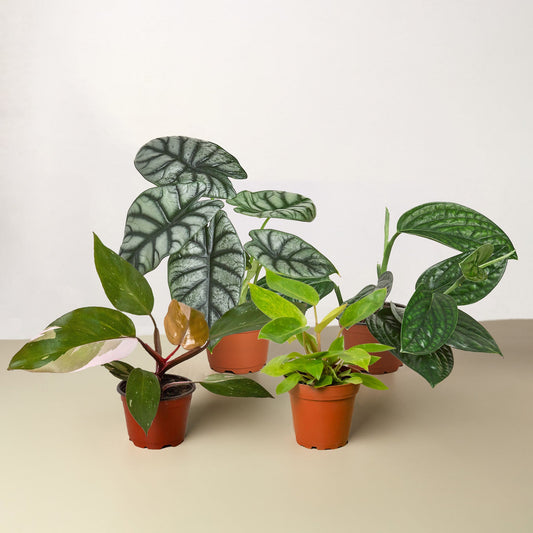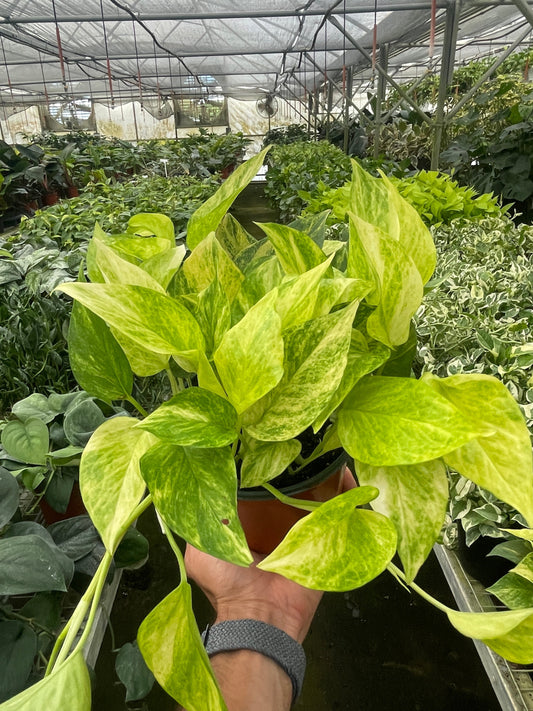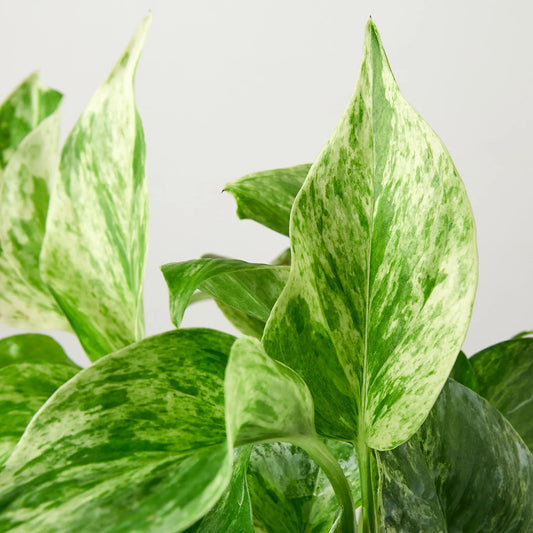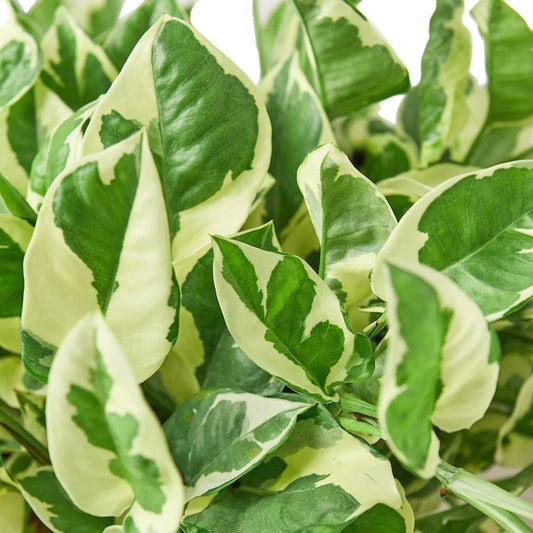How to Grow and Care for Bromeliads
Cafe Planta Team
Have you ever noticed a plant that looks like it could belong in a Dr. Seuss book? You know, with those bright, almost surreal colors and unique shapes? That’s likely a bromeliad you’ve encountered. These fascinating plants are not only visually stunning but are also relatively easy to care for, making them a fantastic choice for anyone looking to add a pop of color and a dash of the exotic to their home.
In this post, we'll chat about everything you need to know to grow and care for bromeliads successfully. We'll cover their origins, the different varieties you can find, and the best ways to keep them healthy and vibrant. We’ll also discuss common challenges and how to incorporate them into your home decor. Ready to learn more about bromeliads?
Getting to Know Bromeliads
Bromeliads are a diverse family of plants that include over 3,000 species. While they might seem tropical and otherworldly, they actually come from a wide range of environments, from rainforests to deserts. This adaptability makes them a versatile choice for plant lovers.
One of the most well-known bromeliads is the pineapple—yes, that delicious fruit is actually a bromeliad! These plants can be epiphytes, meaning they grow on other plants (like trees) without being parasitic. They’re also found growing in soil, giving you a lot of flexibility in how you place them at home.
Bromeliads are known for their rosette of leaves and the striking inflorescence, or flower spike, that emerges from the center. This flower can last for months, adding a long-lasting burst of color to your space. Some varieties even have foliage that changes color, offering a dynamic visual element.
Choosing the Right Bromeliad for Your Home
With so many varieties, picking the right bromeliad can feel like choosing your favorite candy from a massive jar. Here are a few popular types to consider:
- Guzmania: Known for its bright, glossy bracts and vibrant colors, Guzmania is perfect for those who want a splash of color without worrying too much about light conditions.
- Neoregelia: This variety is prized for its stunning foliage, which often features a mix of green and red hues. It’s great for adding texture to your plant collection.
- Tillandsia: Also known as air plants, these bromeliads don’t require soil, making them a unique option for creative displays.
- Aechmea: With its striking, spiky foliage and long-lasting flower spikes, Aechmea is a showstopper. It’s a bit more tolerant of lower humidity, too.
When selecting your bromeliad, consider the light levels in your home, as some varieties, like Guzmania, thrive in lower light, while others might need more sunlight. Also, think about how much space you have and whether you want a tabletop plant or something that can hang or be mounted.
Planting and Potting Your Bromeliad
Once you’ve chosen your bromeliad, it’s time to think about its home. While some bromeliads are happy in pots, others might prefer to be mounted on wood or placed in a terrarium. Here’s a quick guide to help you decide:
- Potting: Most bromeliads do well in shallow pots. Use a well-draining potting mix—think orchid bark or a mix of peat moss and perlite. Bromeliads aren’t fans of waterlogged roots.
- Mounting: If you’re going for an epiphytic look, mount your bromeliad on a piece of driftwood or a cork board. Secure it with wire or fishing line until its roots take hold.
- Terrariums: For a humid environment, a glass terrarium can be an excellent option. Just ensure it has adequate ventilation to prevent mold.
Remember, bromeliads are not too fussy about their pot size since they don’t have large root systems. The main focus should be on ensuring proper drainage to avoid root rot.
Watering Your Bromeliad: The Dos and Don’ts
Watering bromeliads can be a bit different from other houseplants, but once you get the hang of it, it’s a breeze. Here’s how you do it:
- Water in the Rosette: Most bromeliads have a central cup or rosette formed by their leaves. This is where they naturally collect rainwater. Keep this cup filled with water, but remember to flush it out every couple of weeks to prevent stagnation and bacteria growth.
- Soil Moisture: If your bromeliad is potted, keep the soil slightly moist but not soggy. Allow it to dry out a bit between waterings, as overwatering is a common mistake.
- Humidity: Bromeliads love humidity, so if your home is particularly dry, consider misting them or placing them on a humidity tray (a shallow dish filled with water and pebbles).
Remember that bromeliads are naturally adapted to environments where water might be scarce. It's better to err on the side of underwatering than overwatering.
Providing the Right Light Conditions
Bromeliads are pretty adaptable when it comes to light, but getting the right balance is crucial for vibrant foliage and flowering. Here are some tips:
- Indirect Light: Most bromeliads thrive in bright, indirect light. A spot near a window with filtered sunlight is ideal. Direct sunlight can scorch their leaves, so be mindful of placement.
- Low Light Tolerance: Some varieties, like Guzmania, can tolerate lower light levels, making them suitable for spots a bit further from windows.
- Light Adjustments: If you notice your bromeliad’s colors fading or the leaves stretching, it might be a sign of insufficient light. Try moving it to a brighter spot gradually to avoid shock.
Remember, while bromeliads are forgiving, providing the right light conditions can make a significant difference in their health and appearance.
Feeding and Fertilizing Bromeliads
Bromeliads are not heavy feeders, but they do benefit from occasional fertilizing to keep them looking their best. Here’s a simple guide:
- Type of Fertilizer: Use a balanced, water-soluble fertilizer diluted to half strength. Bromeliads don’t need a lot, so less is more in this case.
- Frequency: Fertilize during the growing season, typically from spring to early autumn, once a month. Avoid fertilizing in the winter when the plant’s growth naturally slows down.
- Application: Apply the fertilizer directly to the soil, or if your bromeliad is mounted, you can mist the leaves with the diluted solution.
Over-fertilizing can lead to salt buildup, which can damage the plant, so it’s always better to under-fertilize than overdo it.
Common Pests and Problems
Like any plant, bromeliads can encounter a few pests and issues. Here’s how to tackle them:
- Mealybugs and Scale: These pests can be a nuisance. If you spot them, use a cotton swab dipped in rubbing alcohol to remove them, or apply insecticidal soap.
- Root Rot: Often caused by overwatering, root rot can be avoided by ensuring proper drainage and not letting the plant sit in water.
- Leaf Spot: This can be a sign of fungal infection. Improve air circulation and avoid getting the leaves too wet. Remove any affected leaves to prevent spread.
Regularly inspecting your bromeliads and maintaining a clean environment can help prevent most of these common problems.
Incorporating Bromeliads into Your Home Decor
Bromeliads can be a stunning addition to any room, thanks to their vibrant colors and unique shapes. Here are some ideas to incorporate them into your decor:
- Centerpieces: Use a large bromeliad as a focal point on your dining table or living room coffee table. Their striking appearance makes them a natural centerpiece.
- Wall Displays: Mount air plants (Tillandsia) on a wooden frame for a living wall art feature.
- Bathroom Bliss: The humidity in bathrooms is perfect for bromeliads. Place them on shelves or window sills for a tropical touch.
Experiment with different placements and combinations to find what works best for your space. The versatility of bromeliads means they can fit into any style, from modern minimalism to bohemian chic.
Propagating Bromeliads
Propagating bromeliads is not only a fun activity but also a great way to expand your collection. Bromeliads reproduce by producing pups, which are small offshoots that grow at the base of the plant. Here’s how to propagate them:
- Wait for the Right Time: Allow the pup to grow to about one-third the size of the mother plant before removing it. This ensures it has a strong start.
- Detach the Pup: Use a sharp, sterilized knife to cut the pup away from the mother plant. Be gentle to avoid damaging either plant.
- Potting the Pup: Plant the pup in a small pot with the same well-draining mix used for the mother plant. Water sparingly until it establishes its roots.
Before you know it, you’ll have a house full of bromeliads, each with its own personality and flair!
Final Thoughts
Bromeliads offer a burst of color and a touch of the exotic to any home. With the right care, they can thrive and even multiply, giving you a collection that’s as diverse as it is beautiful. Remember to consider the specific needs of your bromeliad variety, from light and watering to fertilizing and decor placement.
At Cafe Planta, we’re passionate about helping you find the perfect plant for your space. Whether you're looking for new additions or need advice on plant care, feel free to email us, or drop us a message on Instagram. We believe in the power of plants to bring people together and inspire connections with nature. Let’s grow together!



















